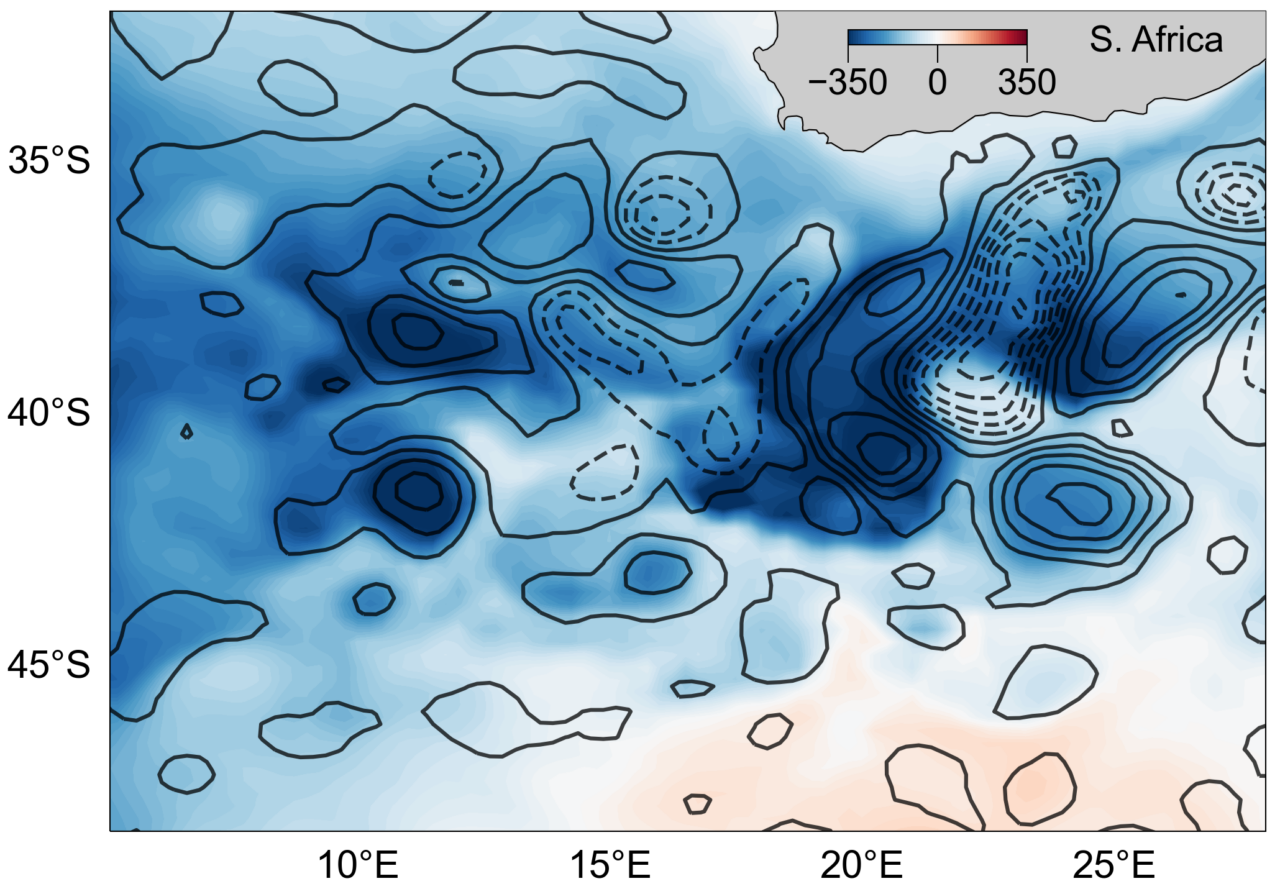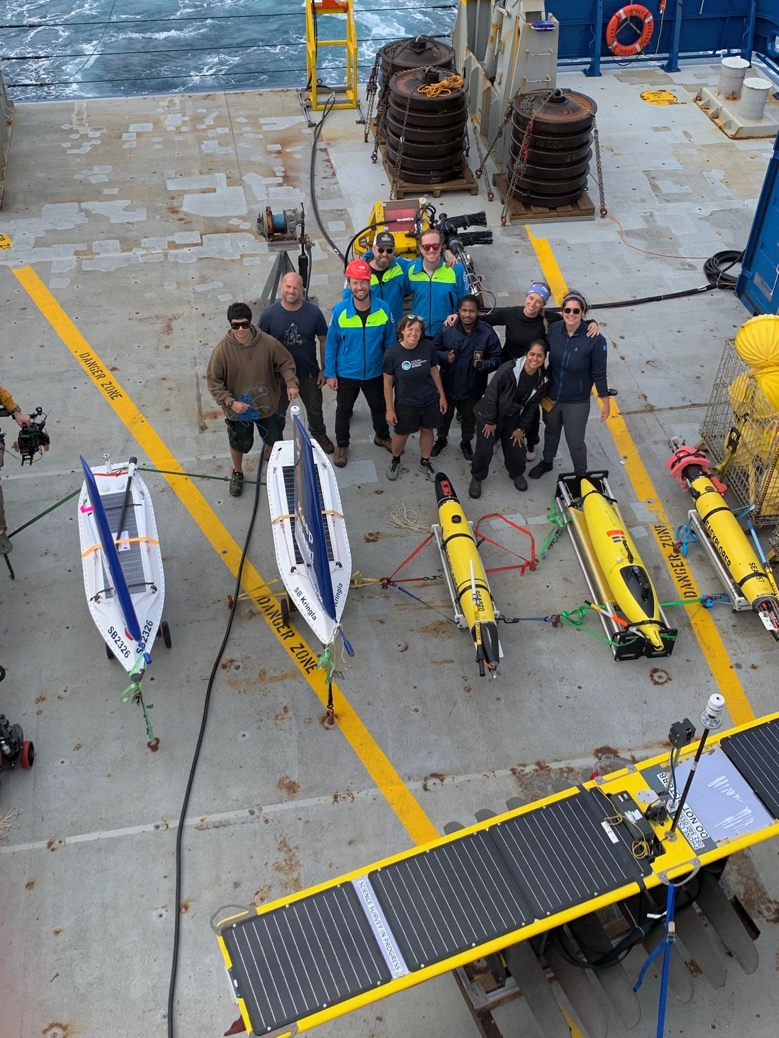Climate-critical air-sea fluxes of heat & carbon are regulated by the fine-scale ocean dynamics
Fine-scale ocean dynamics couple with the overlying turbulent atmosphere & biogeochemistry to drive air-sea exchanges of climate-critical variables, such as heat and carbon.

The ocean’s imprint on the air-sea heat flux: Low-resolution (25 km), snapshot of reanalysis sensible heat flux (in W m-2) over the Cape Basin mirroring the mesoscale ocean circulation underneath. Satellite sea surface height contours (solid & dashed contours) define this ocean circulation & can be seen as closely correlated to the air-sea heat flux.
Ocean circulation and dynamics modulate air-sea fluxes of energy and mass at a range of spatial scales with growing literature on the ocean’s mesoscale anomalies, providing a major gateway for this heat transport, predominantly in western boundary currents. In fact, it has been shown that 50% of latent heat fluxes (turbulent + sensible) in these currents, such as the Agulhas Current System, can be explained by mesoscale eddies alone. Ocean advection, stirring, diffusion, and convection, targeted in WP1, ultimately determine whether these properties are emitted to the atmosphere or enter the ocean interior. The combined scientific thinking and progress in WP1 and 2 are critical to be brought together in WHIRLS—the one is not understood without the other. The high-resolution observations (Uncrewed Surface Vehicles, flux buoys and ships) and coupled model simulations will address the primary hypothesis: fine-scale ocean dynamics couple with the overlying turbulent atmosphere to drive air-sea exchanges of climate-critical variables. It is only through this integrated view that connects the interior and upper ocean with the atmosphere, that we are able to advance our understanding of how the regional ocean can impact regional weather and climate at the global scale.


